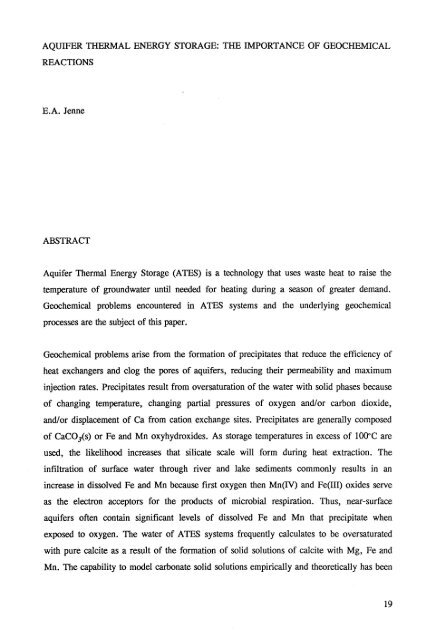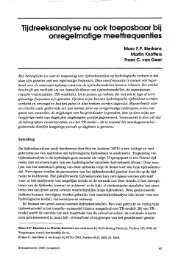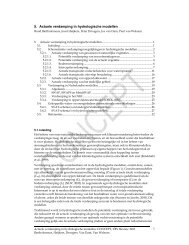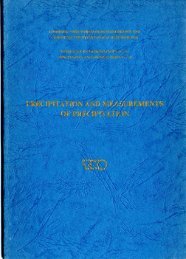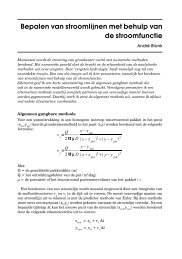Hydrochemistry and energy storage in aquifers - NHV.nu
Hydrochemistry and energy storage in aquifers - NHV.nu
Hydrochemistry and energy storage in aquifers - NHV.nu
You also want an ePaper? Increase the reach of your titles
YUMPU automatically turns print PDFs into web optimized ePapers that Google loves.
AQUIFER THERMAL ENERGY STORAGE: THE IMPORTANCE OF GEOCHEMICAL<br />
REACTIONS<br />
E.A. Jenne<br />
ABSTRACT<br />
Aquifer Thermal Energy Storage (ATES) is a technology that uses waste heat to raise the<br />
temperature of groundwater until needed for heat<strong>in</strong>g dur<strong>in</strong>g a season of greater dem<strong>and</strong>.<br />
Geochemical problems encountered <strong>in</strong> ATES systems <strong>and</strong> the underly<strong>in</strong>g geochemical<br />
processes are the subject of this paper.<br />
Geochemical problems arise from the formation of precipitates that reduce the efficiency of<br />
heat exchangers <strong>and</strong> clog the pores of <strong>aquifers</strong>, reduc<strong>in</strong>g their permeability <strong>and</strong> maximum<br />
<strong>in</strong>jection rates. Precipitates result from oversaturation of the water with solid phases because<br />
of chang<strong>in</strong>g temperature, chang<strong>in</strong>g partial pressures of oxygen <strong>and</strong>/or carbon dioxide,<br />
<strong>and</strong>/or displacement of Ca from cation exchange sites. Precipitates are generally composed<br />
of CaC03(s) or Fe <strong>and</strong> Mn oxyhydroxides. As <strong>storage</strong> temperatures <strong>in</strong> excess of 100°C are<br />
used, the likelihood <strong>in</strong>creases that silicate scale will form dur<strong>in</strong>g heat extraction. The<br />
<strong>in</strong>filtration of surface water through river <strong>and</strong> lake sediments commonly results <strong>in</strong> an<br />
<strong>in</strong>crease <strong>in</strong> dissolved Fe <strong>and</strong> Mn because first oxygen then Mn(1V) <strong>and</strong> Fe(II1) oxides serve<br />
as the electron acceptors for the products of microbial respiration. Thus, near-surface<br />
<strong>aquifers</strong> often conta<strong>in</strong> significant levels of dissolved Fe <strong>and</strong> Mn that precipitate when<br />
exposed to oxygen. The water of ATES systems frequently calculates to be oversaturated<br />
with pure calcite as a result of the formation of solid solutions of calcite with Mg, Fe <strong>and</strong><br />
Mn. The capability to model carbonate solid solutions empirically <strong>and</strong> theoretically has been


